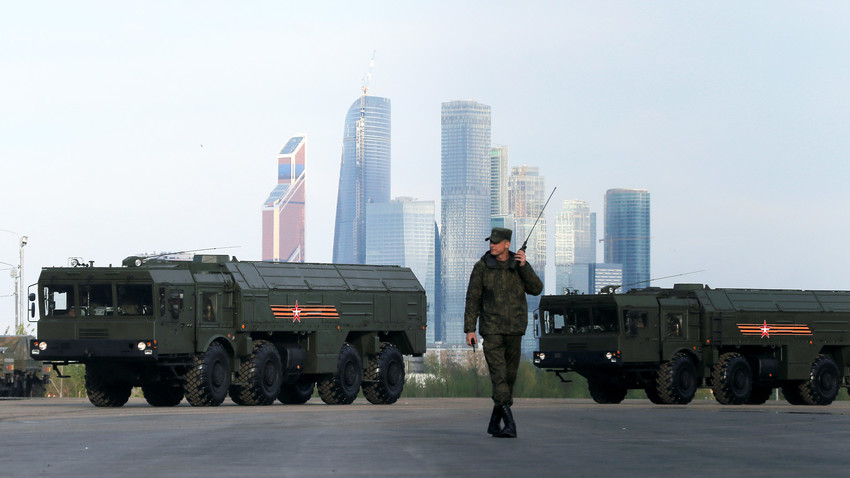
A Russian serviceman walks past Russian Iskander-M missile launchers with the Moscow International Business Center also known as "Moskva-City" seen in the background, at a range in Moscow, Russia.
ReutersThe renowned Iskander-M missile system is already an effective and fearsome weapon. Ten types of warheads can be fitted to the projectile but advances are expected as Russian arms manufacturers are set to release an updated version in the next few years.
The system has never been used in real combat situations before - it’s capable of wreaking complete devastation and is designed to take out strategic targets rooted deep behind enemy lines: Missile systems, air bases, seaports, military bases, factories, etc.
With a range of up to 500
Manufacturers have also added a number of Topol-M intercontinental ballistic missiles system capabilities to the Iskander-M, increasing the chances of the advanced projectile evading anti-ballistic missile complexes.
“It’s
Similar principles are employed by the American BGM-109 Tomahawk cruise missiles. This is one reason why both missiles avoid being taken out by radio-electronic means of warfare - the expert explained.
The Iskander-M’s performing functions are also similar to the U.S.-made ATACMS, but the Russian missile’s combat parameters are far superior.
However, a new system called Long Range Precision Fire (LRPF) is being developed for the American Army right now. It will replace the ATACMS and become a serious competitor to the Iskander-M on the battlefield.
If using any of Russia Beyond's content, partly or in full, always provide an active hyperlink to the original material.
Subscribe
to our newsletter!
Get the week's best stories straight to your inbox